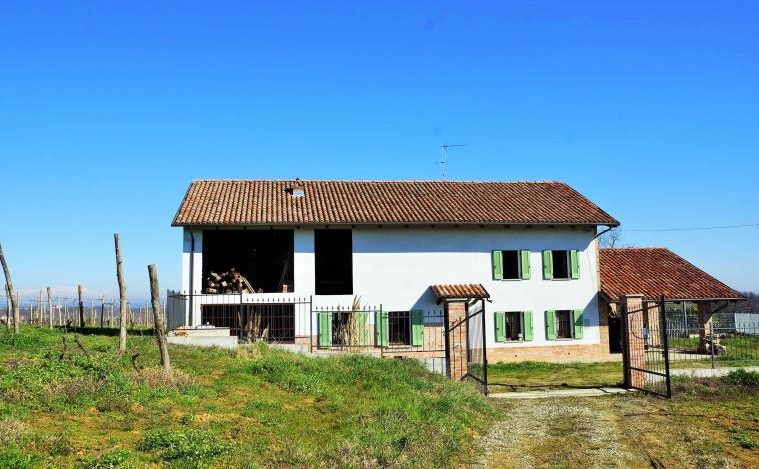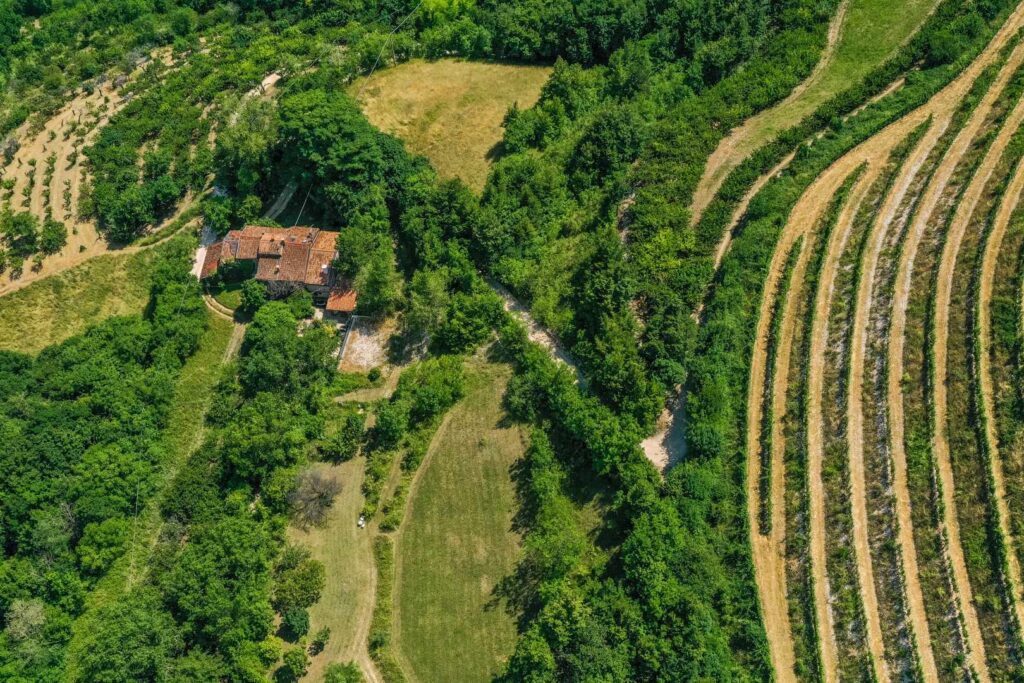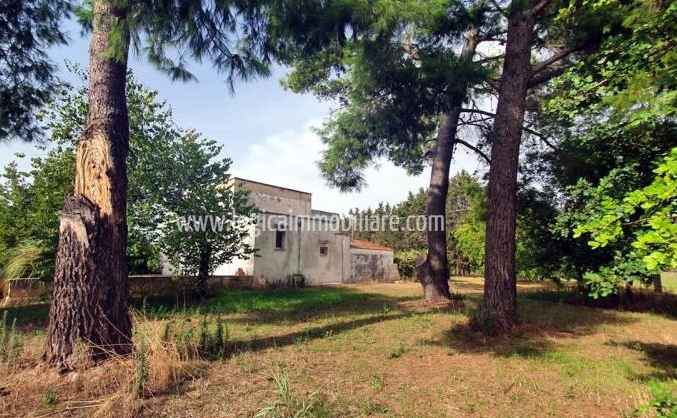Buy a property by a vineyard and you’re almost guaranteed a view, no large scale development nearby and of course, lovely local wine. Here we check out some options for properties in Italy’s wine regions.
In 2022 Italy sold more wine by volume than either France or Spain, and sales reached a record €14bn. If you dream of living in a wine region or even owning your own vineyard, there are many parts of Italy where your dream could come true.
Italy produces many great wines for every occasion, among the most famous are Brunello di Montalcino, Chianti, Barolo, Franciacorta, Barbaresco, Prosecco, Primitivo, Pinot Grigio and Soave. Thanks to the hard work of 310,000 Italian farmers, production in 2022 reached an amazing 50 million hectolitres. (A hectolitre is 100 litres. But you knew that…).
Could you follow in the example of the famous singer-songwriter Sting, and start producing your own wine, as he does from his vineyard at Il Palagio in Tuscany? Like many owners of large farm properties, he not only sells wine and other produce, but also gets an income from holiday rentals and special occasion hire. On this scale you need good marketing, but many people do still have smaller vineyards that produce just enough for their family needs.
Find homes in Italy via our property portal.
Vinitaly
Inspiration and information can be gained from the Vinitaly Exhibition, held at the beginning of April every hear in Verona. Now in it’s 55th year, Vinitaly is a fantastic international promotional platform for the wine supply chain and attracts over 4,000 exhibitors from 30 countries. Vinitaly involves four days of tastings and events in the heart of Verona.
Verona is an elegant UNESCO world heritage city, full of beautiful historic buildings. Highlights of the city include its Romeo and Juliet balcony, the great Roman arena, a fortress, Romanesque Basilica, beautiful piazzas and the view from Torre dei Lamberti. Property for sale around Verona can be equally elegant.
Increase in Exports
At the 2023 edition of the Vinitaly exhibition, Italian farmers’ association Coldiretti presented its analysis of wine sales in Italy and abroad. They reported that Italian wine had reached another historic record in 2022, with sales reaching €14bn. This was mainly due to a significant increase in exports, which rose by 10% to €8bn. The USA (+10%) is the top market, followed by Germany (+5%), and the UK (+10%) Consumption outside the home has also increased thanks to the restart of the restaurant industry.
DOC wines
A strong culture and long winemaking tradition has resulted in Italy having a high number of wines with a strict designations of origin (DOC / DOCG). Veneto, Tuscany, and Piedmont are the top three wine regions for production of high-quality Italian wines. Bottles of Italian wine are about 70% DOCG, DOC, or LGT. 332 Italian wines are of Controlled Denomination of Origin (DOC), 76 Controlled and Guaranteed Denomination of Origin (DOCG), and 118 Typical Geographical Indications (LGT) wines recognized in Italy.
Small producers
These figures don’t include the thousands of people across the country that have small vineyards. Some still press their own grapes in the traditional way, and share the wine with their families. Others might take their grapes to a cooperative or local press, where they pay for pressing or sell the grapes. You will see large plastic bottles of local wine being sold in farm shops and even supermarkets, at very low prices.
Which wines saw the greatest increase?
The wine with the biggest growth in consumption in 2022 was Ribolla of Friuli Venezia Giulia, which increased sales by 12.2%. In second place was Muller Thurgau of Trentino Alto Adige with +10%, while in third position we find the Vermentino of Sardinia, Tuscany and Liguria at +9.9%. These are also followed by Grillo from Sicily (+5.4%), Valpolicella Ripasso from Veneto (+4.1%) and Vernaccia from Tuscany (+3.3%). A few great wines there to look out for.
Income Opportunities
Extra wine sales also increase related job opportunities. As well as those working in the vineyards, cellars and in distribution, there are people designing labels, making bottles, corks and packaging. A knock-on effect is also an increase in opportunities for those working in wine tourism, from tour guides to holiday accommodation.
Create a new vineyard
I have noticed in Puglia that many farmers are planting new vineyards. Buying thousands of young vines, stakes and irrigation systems. Creating new business for nurseries etc. If you dream of owning your own vineyard there are farms of various sizes for sale.
If you buy enough land you could inquire if the plot is suitable for planting a new vineyard and whether there are any subsidies available.
However, if you buy enough land you could inquire if the plot is suitable for planting a new vineyard and whether there are any subsidies available to assist you.
EU Subsidies
Many people with farms receive a subsidy from the EU each year. From 2023 to 2024 the Italian wine sector will receive around €325 million from the EU. According to a decree of the Italian Ministry of Agriculture and Food, the largest amount of €144 million will go to farms for the restructuring and conversion of vineyards, while almost €100 million will be given for sales promotion on export markets. In addition, investments and distillation of by-products as well as green harvesting are promoted.
The largest amounts will go to the large producing regions of Sicily, Veneto, Apulia, Tuscany and Emilia Romagna.
Wine Tourism
As a wine label becomes more popular, tourists will book more accommodation in those wine regions that produce it. Wine tours, wine tasting events and the opportunity to enjoy your favourite wine with a typical meal of the area, is becoming an increasingly popular holiday choice. If you own a farm or vineyard you could even subsidise that income by offering “agriturismo” accommodation.
Italy is one of the dream destinations for wine lovers. Millions of people every year visit Italian wine regions. Wine tourism in Italy is based on a long tradition of winemaking, with some wineries including museums on their tours, illustrating its history. Such as this “Primitivo” museum in Manduria, Puglia. When you combine great wine with Italy’s amazing food, breathtaking landscapes, historic architecture and wine tasting events held in village piazzas, you can see why wine growing is so important to communities.
Wine Tourism in Montalcino, Tuscany
Montalcino is a perfect example of a wine tourism area where wine drives the economy, while respecting the environment. Wine enthusiasts from all over the world come on a “pilgrimage” to taste the Brunello red wine of Montalcino. Once they arrive, they discover that the Val d’Orcia, has a landscape so beautiful it is listed by Unesco.
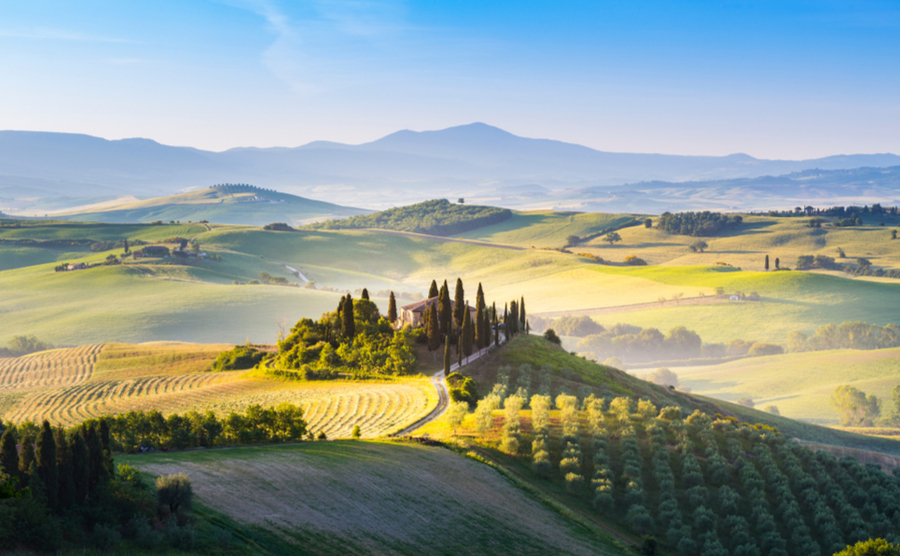
San Quirico d’Orcia, , Siena Province (Giorgio1978, Stefano Termanini)
Val d’Orcia is an outstanding example of landscape redesign in the Renaissance, resulting in an agricultural and pastoral landscape harmoniously set alongside towns, villages and farmhouses. The Roman Via Francigena and the structures connected to it, such as abbeys, inns, sanctuaries and bridges, also add to its historic interest.
There are some lovely stone farmhouses for sale in Montalcino.
Wine growing regions
The majority of wines in Italy come from the four regions of Veneto, Apulia, Emilia-Romagna and the island of Sicily. Together they make up more than half of the production. Piedmont is also well known due to the popularity of Barolo wine. Most Italian wines are produced from indigenous grape varieties: 350 grape varieties are grown across the Italian wine regions, most of which are of Italian origin with an aroma characterized by the local climate and landscape.
Here I take a look at the wine produced in each of these five regions and the towns and villages the wine routes pass through. Whether you want to buy property in a landscape of vineyards, own a vineyard your self, or want a property with holiday rental potential, these wine regions are a good place to start your search.
Wine regions of Piedmont
Piedmont wines have an excellent international reputation. Barolo and Barbaresco, both of which are made from the noble Nebbiolo variety Barbera, are produced here. As well as Arneis and Gavi, which are a white wine of high quality. The white grape variety Moscato Giallo is vinified into the sparkling and sweet Moscato d’Asti and is often drunk by the locals as a dessert wine.
Wine route towns in Piedmont
For a millenia, this lush and beautiful region of north-west Italy has produced some of the finest wine in the world. Piedmont’s UNESCO wine area is the Langhe, which offers stunning vistas of the rolling hills and vineyards, dotted with charming hilltop villages.
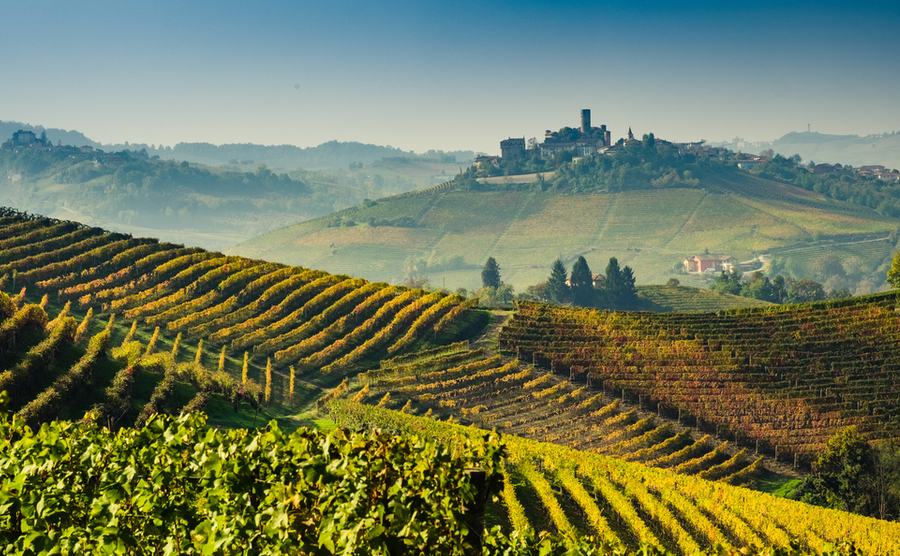
Harvest time in the Langhe Valley in Piedmont (Giorgio1978 / Shutterstock.com)
There are several villages you could consider when buying property that are on the itinerary of wine tasting tours. The most famous is Barolo, with its enoteca (wine tasting shop), wine bars and wine museum. Then there are the smaller villages of Barberesco and Monforte d’Alba. For great food and drink in a village listed as one of the “Most beautiful Villages in Italy” visit Neive. However, head Alba if you want to be near a larger town in the Langhe. Most wines produced in Piedmont can be sampled and bought in Alba.
Property on a hilltop covered in vineyards
You could even buy your own winery in Piedmont.
Wine regions of Veneto
Veneto, is where the wonderful sparkling Prosecco is produced. Since 2009, Prosecco is officially the name of the growing region and is limited to five provinces and Friuli. Wine can be called Prosecco only if the vines of the Glera variety come from these areas.
There are some great cities in Veneto, such as Verona, Vicenza and Chioggia. Veneto tourism has a recommended wine route called “Strada del Prosecco e vini dei Colli Conegliano e Valdobbiadene”.
Wine route towns in Veneto
The Prosecco route starts at Conegliano, where highlights include the cathedral, castle and the arcades of Contrada Grande. Nearby, is the historic Istituto Cerletti, the oldest wine school in Italy founded in 1876. The route also passes through Collalbrigo, Rua di Feletto, and San Pietro di Feletto. Then you have the hilly views of Refrontolo and Solighetto, followed by the medieval Credazzo Towers of Col San Martino. Further north is the Cartizze hill, which is famous for the excellent Conegliano Valdobbiadene Docg from which the prized sparkling wine of the same name is obtained. After passing Santo Stefano and San Pietro di Barbozza, you arrive at Valdobbiadene ,
House surrounded by countryside and vineyards in Veneto:
Wine regions of Puglia
The sunny region of Puglia, is authentic and full of culture. The combination of sun, sea and red soil help to create olives, grapes, and fruit that you can taste the sun in. Its wines have a strong character and distinctive identity. As well as being a popular holiday destination for its beaches, it is also well-known for its Primitivo and Negroamaro wines.
The Primitivo grape variety, actually gets its name from the Latin word “primativus”, which translates to “the variety that ripens the earliest”. These two grape varieties are unique to the region. Puglia’s wine region is divided into five territories that are well-defined districts: High Murgia, Lower Murgia, Itria Valley, Messapia, and Salento.
Puglia wine region covers 83,000 hectares, about 80% of which is planted with red wine varieties. It has four distinct DOCG and 28 DOC zones. Of which, Salice Salentino and Primitivo di Manduria are the most popular DOC wines in the Puglia region.
Wine route towns and villages in Puglia
There are about 8 suggested wine routes and 80 recommended wine estates in Puglia. There are so many beautiful towns and villages near vineyards. The finest qualities vines grow on the Salento peninsula, around the towns of Manduria and Taranto. If you love Negramaro, visit villages around Nardo, Galipoli, and Lecce. For Primitivo take a look at property around the Valle d’Itria and Manduria.
House to renovate in the Negroamaro wine region:
Wine Regions of Emilia Romagna
One of the most famous grape varieties of the Emilia Romagna region is the Lambrusco, which is sweet and sparkling and is mainly found around Modena. In fact, The most common grape varieties are Lambrusco Salamino and Lambrusco Grasparossa. There are around 58 000 hectares of vineyards in the wine region, almost half of them in the plain. Emilia-Romagna’s wine region also produces some lovely red wines from the Sangiovese grape variety. In addition to Sangiovese and Lambrusco, Pinot Noir plays an important role among the red grape varieties in Emilia-Romagna.
Wine route towns in Emilia Romagna
Emilia has superb food and wine routes. As well as great wine this is the land of Parmigiano Reggiano, Aceto Balsamico (Modena), mortadella cured meat (Bologna). The “Strada dei Vini” crosses the four main valleys of the Apennines around Piacenza, including Arda, Nure, Trebbia, and Tidone. The wine route of Colli di Scandiano and Canossa, is home to the Lambrusco and some amazing scenery including castles, towers and historic villages. Then you have routes visiting Corti Reggiane, Scandiano, Modena, Ferrara and Faenza. You can find out more on the official Emilia Romagna website.
Check out this four-bedroom stone farmhouse in Emilia Romagna.
Wine regions of Sicily
You can’t visit Sicily without noticing Mount Etna. As well as being a year round tourist attraction, its volcanic soil produces great wine. The most common red grape variety is the Nero d’Avola,which has a unique flavour, reportedly having notes of “jam, leather, and liquorice”. Etna is also home to other local red varieties such as Nerello Mascalese and Nerello Cappuccio, as well as salty white wines from Carricante.
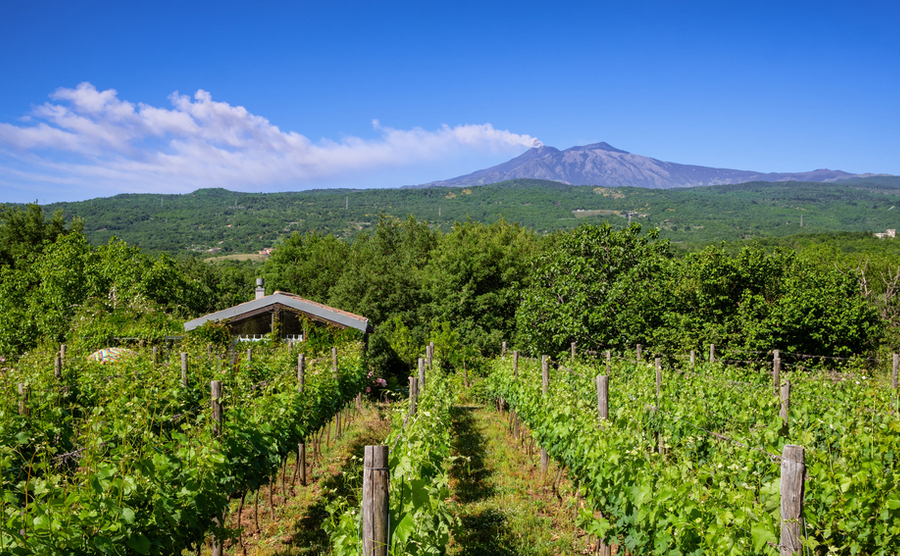
Mount Etna quietly smoking above the vineyard
Wine route towns in Sicily
The Sicilian region regulates it’s “Wine roads” indicating vineyards and wineries that welcome visitors and offer wine tasting and other activities. These routes include towns and villages such as, Randazzo, near Catania, the baroque cities of the Val di Noto, the medieval village of Erice in western Sicily and of course Marsala, whose famous wine takes its name.
See an outstanding property in Masala, for just €270,000, with 360 degree views.
Read more about property on vineyards in Europe


